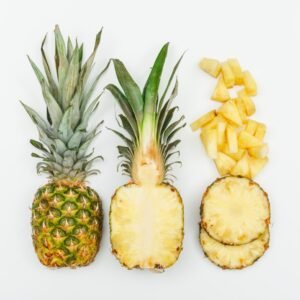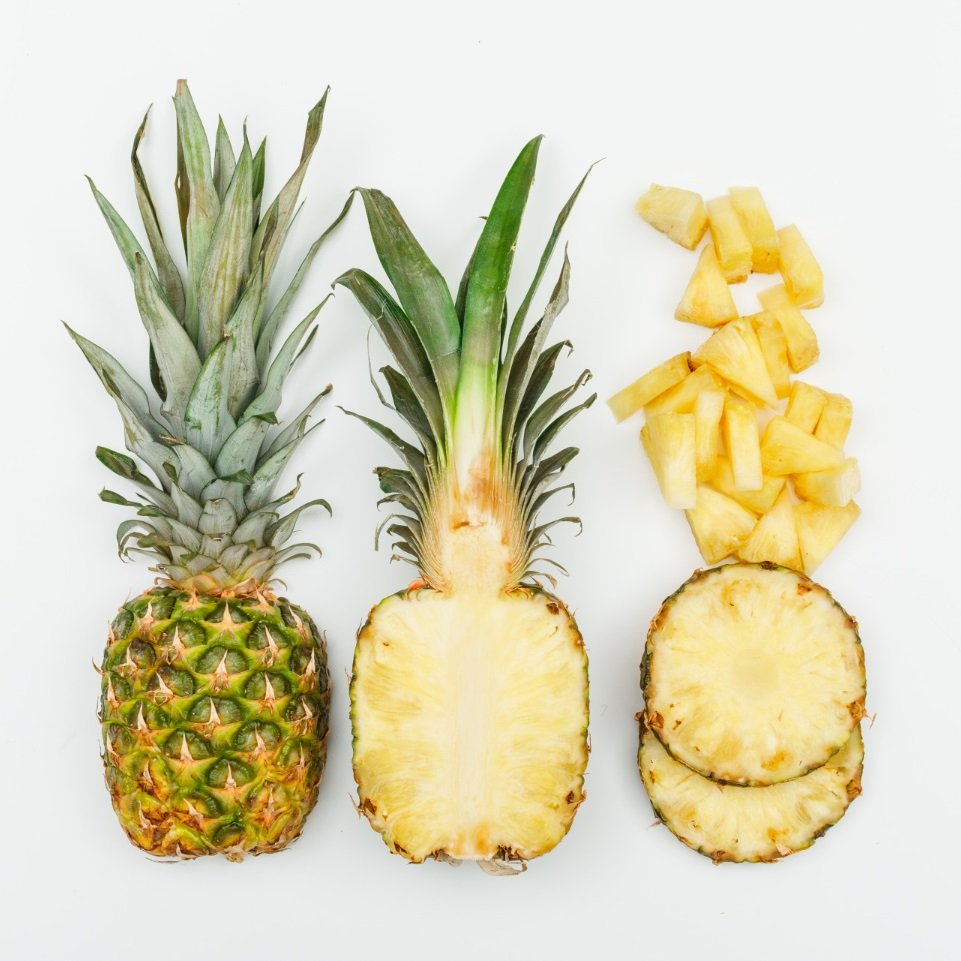Pineapples, with their sweet and tangy taste, have a fascinating journey from cultivation to your plate. Understanding the intricacies of pineapple cultivation not only enhances your appreciation for this tropical delight but also sheds light on the sustainable practices that contribute to its availability year-round. In this article, we’ll explore the journey of pineapple cultivation, from planting to harvest, and the key factors that make it thrive.

1. The Pineapple Plant:
At the heart of pineapple cultivation is the Bromeliaceae family, where the pineapple plant, scientifically known as Ananas comosus, takes center stage. This perennial plant thrives in tropical climates, requiring well-drained soil and abundant sunlight. Pineapple plants are known for their distinctive rosette arrangement of spiky leaves, creating a visually striking landscape on pineapple farms.
2. Propagation:
Pineapples can be propagated through the crown, slips, or suckers. The crown, the leafy top of a mature pineapple, is the most common method. After harvest, the crown is carefully removed, dried, and then planted in soil to develop into a new pineapple plant. This sustainable propagation method ensures a continuous and efficient supply of pineapples.
3. Growing Conditions:
Pineapple cultivation thrives in tropical climates with temperatures ranging between 65°F to 95°F (18°C to 35°C). The plants require well-draining soil to prevent waterlogging and benefit from a consistent water supply. Additionally, pineapple fields are often rotated to maintain soil health and prevent the depletion of nutrients.
4. Cultivation Techniques:
Commercial pineapple cultivation employs various techniques to maximize yield and quality. These include controlled irrigation, organic fertilization, and the strategic use of natural pest control methods. Sustainable farming practices play a crucial role in preserving the ecosystem and ensuring the long-term viability of pineapple crops.
5. Harvesting:
Pineapples are typically ready for harvest 15 to 24 months after planting. Harvesting is a delicate process, as each pineapple is handpicked to avoid damage. A pineapple is considered ripe when it develops a sweet aroma, vibrant color, and yields slightly to gentle pressure. This careful selection ensures that only the highest quality pineapples make their way to market.
6. The Global Pineapple Industry:
Pineapple cultivation is a global enterprise, with leading producers including Costa Rica, the Philippines, Thailand, and Indonesia. The global trade of pineapples ensures a year-round supply, making this tropical fruit a staple in households worldwide.
The journey from pineapple plant to your table is a testament to the careful cultivation practices employed by farmers worldwide. By understanding the intricacies of pineapple cultivation, we gain insight into the dedication, sustainable practices, and global collaboration that bring this tropical delight to our plates. So, the next time you savor a juicy slice of pineapple, remember the journey it took to reach you, from the sunny fields where it was cultivated to the careful hands that harvested it for your enjoyment.
____________________________________________________
![]() Best Agricultural Supplier For Export and Import
Best Agricultural Supplier For Export and Import
Vlux Vietnam Import Export Company Limited
Mobile/Whastapp/Wechat: +84 35 939 9345
www.vluxexim.com
Address: No. 58A Vo Van Dung Street, O Cho Dua Ward, Dong Da District, Hanoi City, Vietnam
#agriculturals #agriculturalVietnam #FlavorProfiles #VluxVietnam


